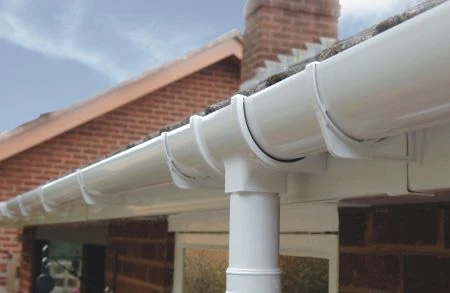Downpipes are important elements of a structure's drainage system. They play a key function in handling rainwater overflow, guaranteeing correct drainage, and preserving the structural integrity of a property. This article intends to provide a comprehensive overview of downpipes, including their types, installation, maintenance, and typical FAQs.

Downpipes, also understood as downspouts, are vertical pipelines that direct rainwater from the roof to the ground or drainage system. They link to the gutters, which gather rainwater from the roof's surface, directing the water away from the building's foundation. Properly installed and kept downpipes avoid water damage, disintegration, and other concerns that can emerge from bad drainage.
Water Management: Downpipes guarantee that rainwater is directed far from the building, preventing pooling and potential water damage to walls and structures.
Structural Integrity: By assisting in correct drainage, downpipes help preserve the structural stability of a structure, lowering the risk of cracks and other types of damage brought on by water infiltration.
Preventing Erosion: Downpipes help in preventing disintegration around a residential or commercial property, which can cause landscaping damage and compromised structure stability.
Health care: Effective water management decreases the danger of mold and mildew, which grow in wet conditions and can affect indoor air quality and health.
Downpipes are available in various materials and designs, each ideal for different applications and visual appeals. Below are some common kinds of downpipes:
| Type | Product | Benefits | Disadvantages |
|---|---|---|---|
| PVC Downpipes | Polyvinyl Chloride | Light-weight, simple to set up, resistant to deterioration | Can become brittle with time, might not endure effect |
| Aluminium Downpipes | Aluminium | Resilient, light-weight, rust-resistant | Can be more pricey than PVC, might dent quickly |
| Steel Downpipes | Galvanized or Stainless Steel | Strong and resilient, can withstand heavy rains | Heavier, prone to rust if not covered appropriately |
| Copper Downpipes | Copper | Visual appeal, extremely durable, resists corrosion | Expensive, needs professional installation |
Material: Choose a material that fits your budget and visual choices.
Size: Ensure the downpipe's size refers the gutter's capacity to guarantee optimum flow.
Environment: Consider local climate condition; for instance, locations with heavy rainfall may require larger or reinforced downpipes.
Structure Design: The design of the building and roof pitch might influence the type and size of downpipes required.
Setting up downpipes requires cautious planning to ensure that they effectively carry water away from the roof and far from the foundation of a structure. Here's a step-by-step introduction of the installation procedure:
Planning: Assess the roof design and compute the size and number of downpipes required based on the area and slope.
Material Acquisition: Gather all required products and tools, consisting of downpipes, connectors, brackets, and sealant.
Positioning: Mark the places where the downpipes will be installed, ensuring they align with the gutters and drain water away from the foundation.
Cutting: Cut the downpipe to the required length, making sure a snug fit into the gutters.
Repairing: Secure the downpipe with brackets, ensuring it is vertical and well-supported.
Sealing: Apply sealant around joints and connections to prevent leaks.
Evaluating: After the installation, test the downpipes by running water through the system to guarantee proper drainage.
Regular maintenance of downpipes is important to guarantee their longevity and effectiveness. Below are some vital maintenance ideas:
Inspect Regularly: Check downpipes at least twice a year for clogs, wear, and tear.
Clear Debris: Remove leaves, dirt, and other particles from downpipes and gutters to avoid obstructions.
Examine for Leaks: Inspect joints and seals for any signs of water leakages and re-seal if needed.
Display Connections: Ensure that downpipes are safely attached to gutters and the drainage system.
Professional Cleaning: Consider hiring professionals to clean or inspect downpipes and gutters, specifically in areas with heavy foliage.
1. How typically should downpipes be cleaned up?It is a good idea to tidy downpipes and gutters a minimum of twice a year, preferably in spring and fall.
2. What are the signs that downpipes need maintenance?Look for overflowing gutters, pooling water around the structure, or visible leakages and corrosion.
3. Can I install downpipes myself?While it is possible for DIY lovers to set up downpipes, it is recommended to hire a professional to ensure proper installation and compliance with local guidelines.
4. What materials are best for downpipes in seaside areas?In seaside areas, corrosion-resistant materials like PVC, aluminum, or stainless steel are chosen to stand up to extreme environmental conditions.
5. Can downpipes be painted?Yes, downpipes can be painted, however it is important to utilize paint that appropriates for the specific product to prevent damage and make sure longevity.
Downpipes are necessary for reliable rainwater management, safeguarding both the structure and its environments. Comprehending the various types, installation processes, and maintenance requirements will guarantee that homeowners can make educated choices about their structure's drainage system. By focusing on downpipe maintenance and choosing the proper materials, homeowner can prolong the life of their drainage systems while protecting their investments.
No Data Found!

